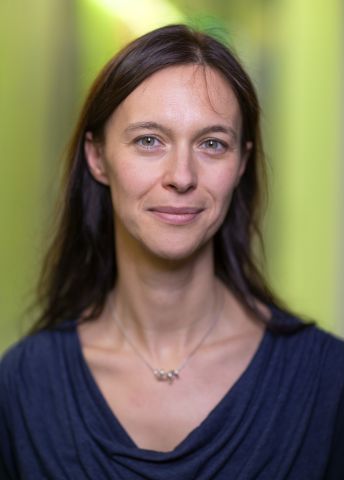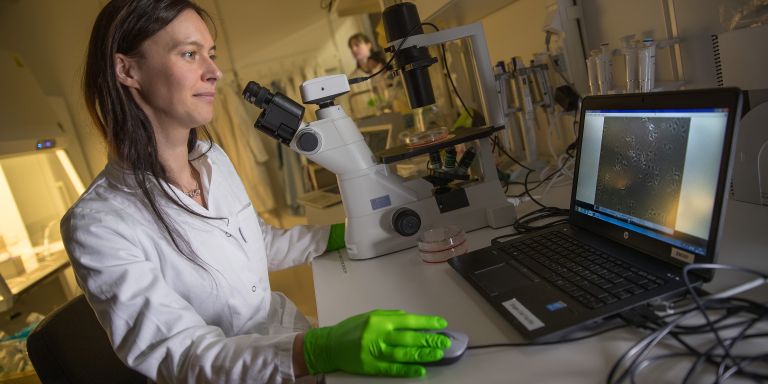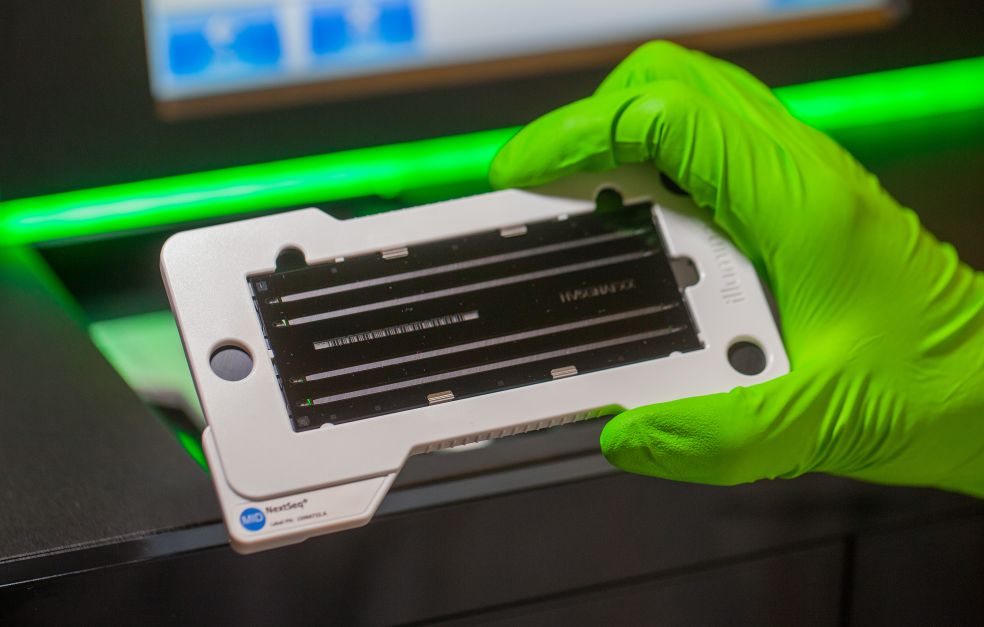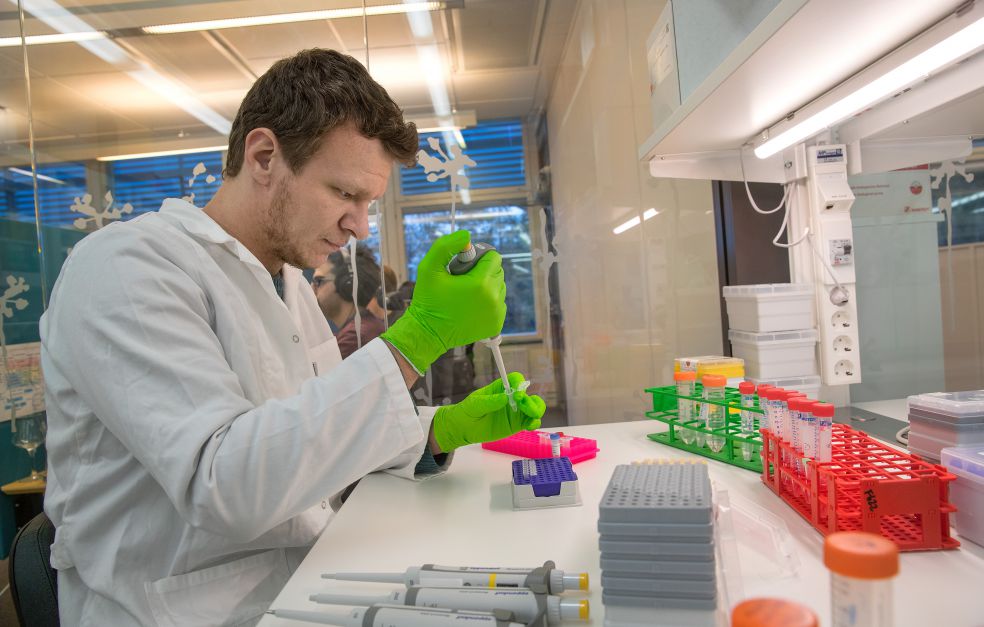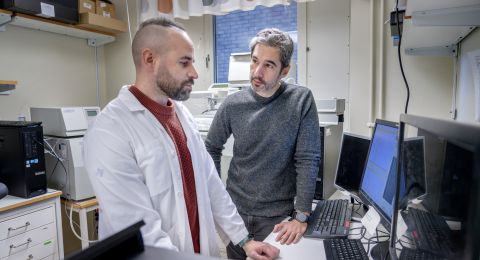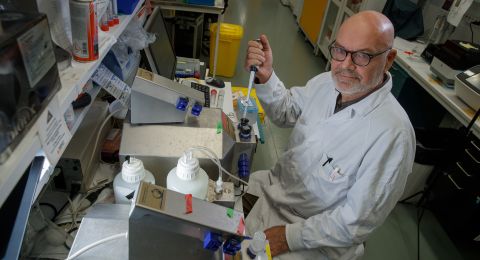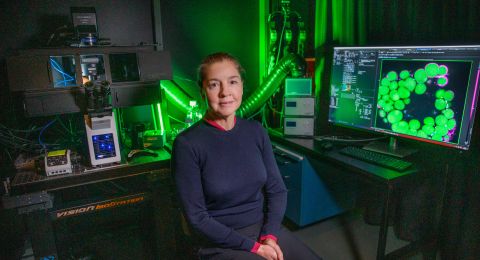Claudia Kutter is researching into molecular mechanisms that may explain how healthy cells become cancerous. She hopes to find targets for treating liver cancer. In the laboratory she is making detailed studies of non-coding RNA, formerly called junk DNA, which has been found to play a key role in the onset of cancer.
Claudia Kutter
PhD Genetics
Wallenberg Academy Fellow 2016
Institution:
Karolinska Institutet
Research field:
Mapping molecular mechanisms regulating how non-coding RNA impacts gene expression in healthy and cancerous cells, with the goal of understanding liver cancer development.
Ever since she was a child Kutter has been fascinated by biology. Recent years have seen rapid developments in her specialist fields – genetics and molecular biology.
“True – but there is still so much we don’t know. We have only seen the tip of the iceberg,” she says.
As a Wallenberg Academy Fellow, Kutter wants to better understand how healthy liver cells mutate and cause cancer. At SciLifeLab, the national center for molecular biosciences in Stockholm, her research team is combining biological experiments with advanced computations.
One of the labs contains cell cultures, and centrifuges that concentrate DNA. An incubator keeps the cells at 37.1 degrees Celsius – as close to body temperature as possible.
“I like being in the lab. It reminds me why we do what we do. I often drop by, and when there’s a lot to do, I’m happy to help out.”
Finding targets
Liver cancer is one of the deadliest diseases in the world. Growing numbers of people are affected. Besides genetic factors, the main causes are unhealthy diet, obesity and high alcohol consumption, along with the chronic viral infections hepatitis B and C.
“As yet there is no cure. By the time cancer is diagnosed, it’s often too late. It’s essential to find ways of discovering abnormal cells at an early stage, and also to find suitable targets for treatment.”
When healthy cells become cancerous, the genes that control cell growth mutate. Growth-inhibiting genes are also inactivated and cancer cells begin to proliferate. Kutter describes an experiment in which a gene in liver cancer cell DNA has been removed to see what effect this has on cell growth, and whether it can be stopped.
“Cancer cells communicate with one another in the blood stream. Once they have established contact with each other the process is very rapid. This can be seen clearly in the petri dish,” she explains, pointing to a small plastic dish on the bench top.
RNA, or “messenger molecules” as they are also known, have the job of converting DNA into different proteins in our cells. Non-coding RNA molecules, on which Kutter is an expert, used to be known as “junk DNA”. We now know that non-coding RNA performs many crucial tasks in biological processes. Examples include regulation of gene expression, and development of cancer. But much remains to be learnt about how these processes work.
Of mice and men
Kutter began studying non-coding RNA during her university studies in Germany – her home country. During her PhD studies in Switzerland she continued to explore these molecules. She acquired her liver cancer expertise as a postdoctoral researcher at the University of Cambridge in the U.K.
Her long-term goal is to identify liver-specific non-coding RNA, and use it in medical research.
“We hope to find molecules based on RNA that can help us treat liver cancer more specifically than is currently possible. We have the advantage that everything administered via the blood ends up in the liver, so it’s easy to reach the target in the liver once we know what the target is. Hopefully, we will be able to apply the findings from this project to other forms of cancer as well.”
Kutter explains that the RNA samples being used are specific to a common form of liver cancer. The research team is studying healthy and cancerous cells from mice and humans in parallel.
“Mice are often used as a model, but it’s not certain that the mechanisms in mice even exists in humans – so we need to be able to compare them.”
The researchers want to understand how the genes are regulated, for example how they are turned off and on, in these cells. They are also studying the dynamics of transcription – how DNA is converted into RNA.
“We want to learn more about these mechanisms, how they work in normal cells, and in cancerous ones. It may help us to understand what goes wrong in a cancer cell.”
“It’s an exceptional grant – one that will enable us to conduct cutting-edge research for years to come. It will help us to advance the frontiers and answer interesting research questions.”
A mass of data
When Kutter was young she was also fascinated by space, and she still follows the progress of research in the field. Much remains unknown, both in astronomy and in genetics, a parallel she usually draws in her teaching.
“Astrophysicists know there is dark energy, but not what it looks like. It’s a bit like our genome. We know that eighty percent is unexplored. We also know there are important parts of it we haven’t yet discovered.”
Technological developments have broadened the scope of what can be studied, and more and more information is being generated. Kutter points out that the greatest challenge in the future will be to interpret all the data produced by the new technologies, and to understand how it can be used to treat deadly diseases such as liver cancer.
“We totally depend on collaboration with other research teams with different specialties to find answers to these questions. That’s why it’s so fantastic to be here at SciLifeLab, where so much local expertise is gathered.”
Text Susanne Rosén
Translation Maxwell Arding
Photo Magnus Bergström
